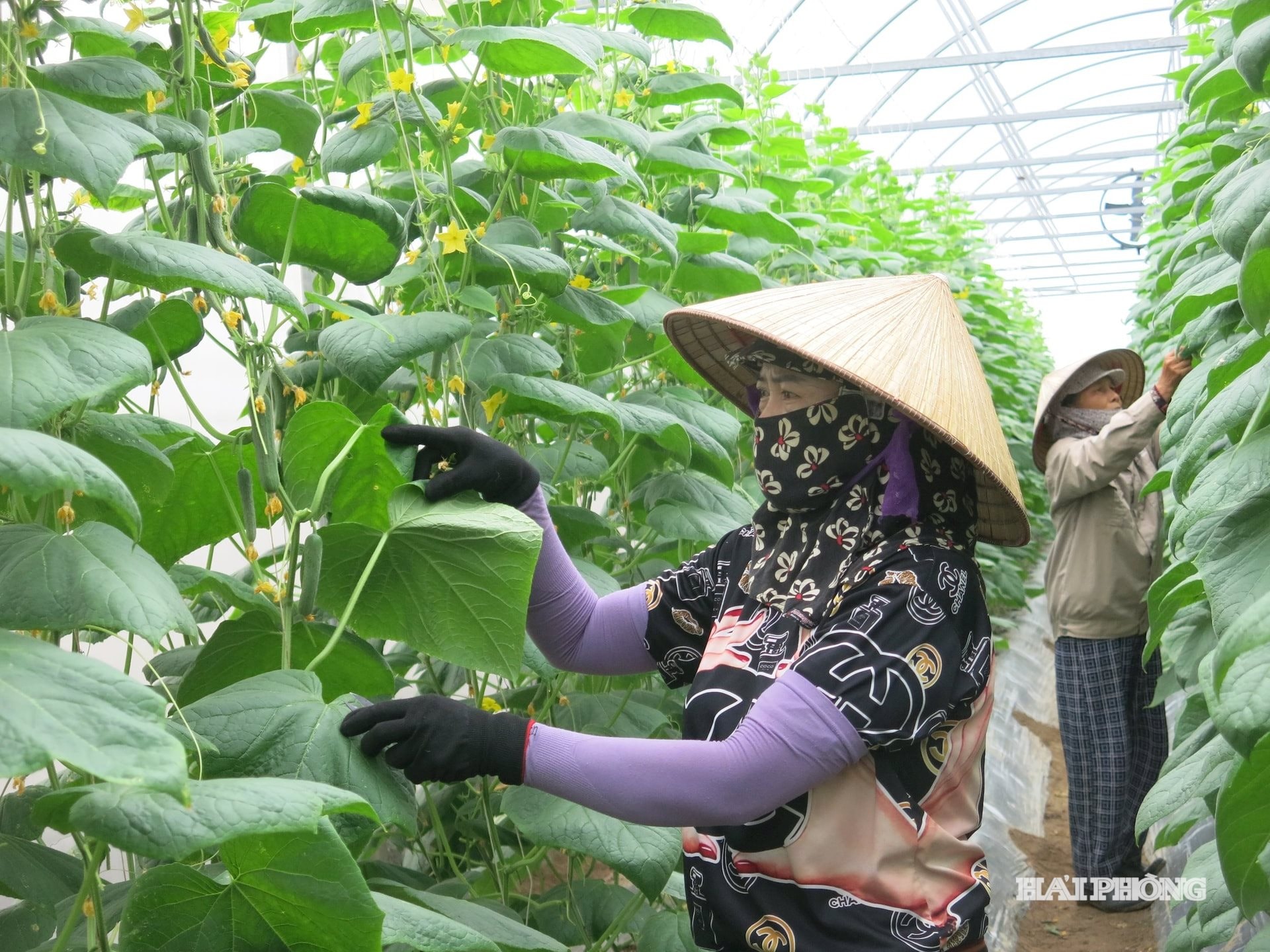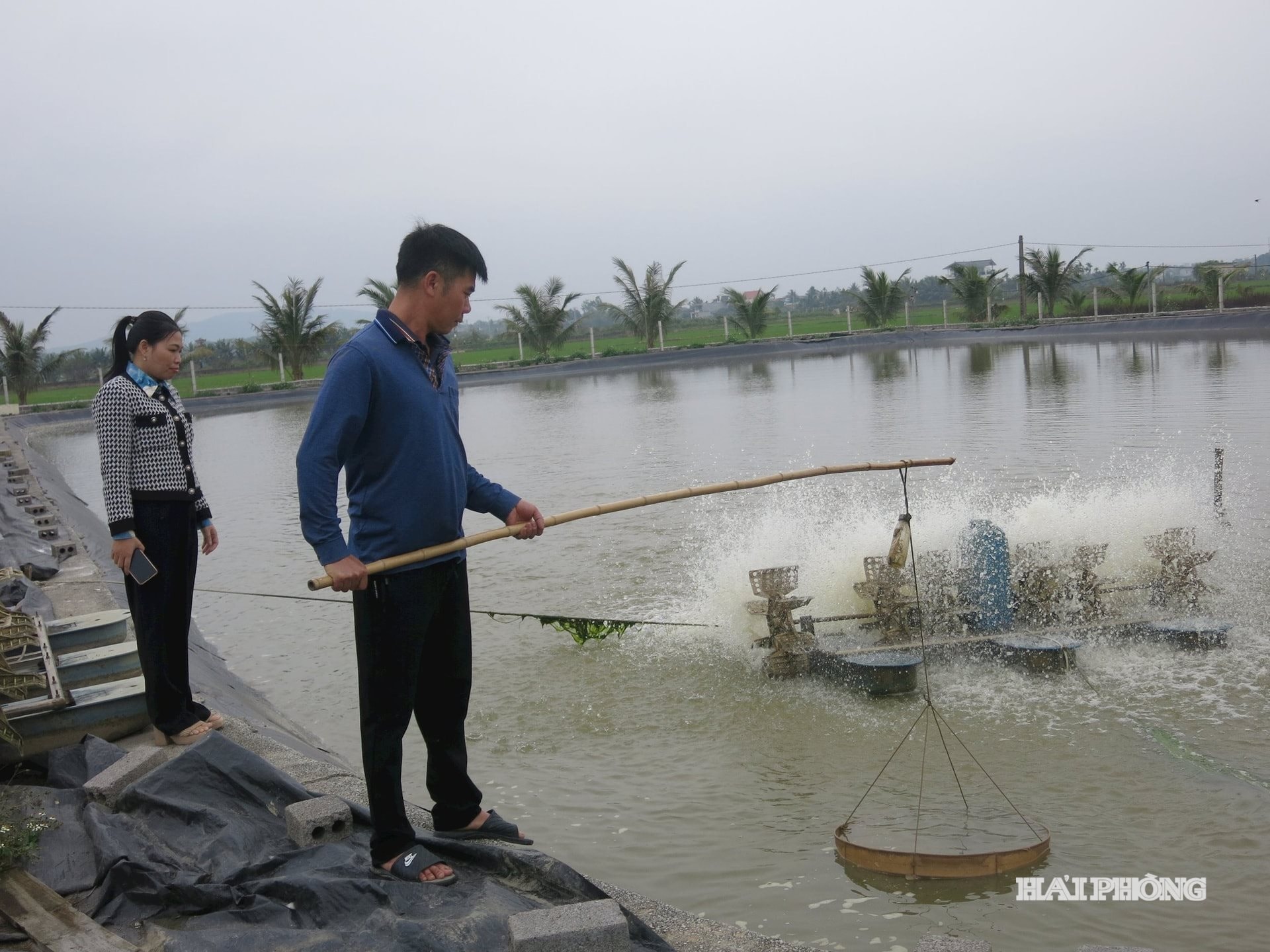
Concentrated production of goods
According to the report of the Department of Agriculture and Environment, the estimated value of agricultural, forestry and fishery production in 2025 is over 39,605 billion VND. Of which, the eastern part of the city reaches 15,724.70 billion VND, an average growth rate of 0.50%/year. The western part of the city reaches 23,881 billion VND; an average growth rate of 4.2%/year. The production value (current price) per unit of agricultural land in 2025 reaches 152 million VND/ha, 1.14 times higher than in 2021 (133.8 million VND/ha).
For high-tech agricultural production using greenhouses and net houses, the value can reach 350-400 million VND/ha. For aquaculture land area in 2025, it will reach 311 million VND/ha, 1.13 times higher than in 2021 (274.2 million VND).
Every year, rice productivity is continuously improved, ensuring food security. Many areas of abandoned rice fields are converted to suitable crop structures. Safe production and organic production are given more attention. Notably, the area of large-scale concentrated commodity production is increasingly expanded.
Currently, in many communes in the east of the city, there is no longer any small-scale production area. Large-scale households collect and accumulate abandoned land for large-scale production. The person with the smallest production area has an area of 5-10 hectares. In particular, there are households producing on an area of 60-100 hectares.
In the western part of the city, famous specialized production areas have been formed such as Thanh Ha lychee, carrots, custard apples, longan, grapefruit; vegetables...
The aquaculture and livestock sectors also form concentrated production areas, applying technical advances to achieve high productivity and quality, meeting consumer demands.
According to Le Thai Nghiep, Deputy Head of the Department of Crop Production and Plant Protection of Hai Phong , the outstanding results in the field of agriculture and rural development are thanks to the city devoting large resources to agricultural production and new rural construction. In particular, the eastern part of the city devotes resources to investing in new rural infrastructure; the western part has capital from integrated programs with large investments to develop commodity production areas.
The system of enterprises investing in agricultural production and processing in the whole city is quite diverse. Farmers have a lot of production experience, always aiming for high efficiency agricultural production, increasing production value.

Forming high-tech agricultural clusters
With a diverse and rich agricultural production area, in the coming period, the Department of Agriculture and Environment of Hai Phong sets the goal of developing high-tech agriculture, applying mechanization, smart agriculture, food safety and hygiene production processes, meeting VietGAP - GlobalGAP - organic standards, towards sustainable development and global integration.
By 2030, strive to have 80% or more of the commodity production area with a growing/farming area code; 60% or more of agricultural and aquatic product output consumed through product consumption contracts; reduce at least 20% of post-harvest losses thanks to mechanization, modern preservation, processing and logistics technology; form at least 10 high-tech agricultural clusters, creating a nucleus for spreading smart, environmentally friendly production models...
To achieve the above goal, according to Deputy Director of the Department of Agriculture and Environment Luong Thi Kiem, the city will focus on 5 key groups of solutions, including: Expanding the technology field model to key crops such as vegetables, fruit trees, flowers - ornamental plants, strengthening regional and chain linkages. Promoting technology transfer, training digital skills for farmers, building an innovative ecosystem in agriculture. Supporting businesses and cooperatives to invest in machinery, cold storage, deep processing, linked with traceability, and brand building. Reviewing and planning production areas, accumulating land, forming large production areas, integrating mechanization - digitalization - ecological agriculture solutions. Developing digital agricultural data infrastructure, connecting e-commerce, agricultural product logistics and expanding export markets.
In addition, for communes with potential and advantages for agricultural and fishery economic development, attention will also be paid to planning concentrated production areas in accordance with local socio-economic development and new rural construction plans; actively propagating and mobilizing farmers to apply technical advances for effective production, increasing production value per unit of land area.
Local authorities proactively coordinate with city authorities to remove difficulties, support farmers, production facilities, cooperatives, and businesses to fully access mechanisms and policies to encourage and support the development of agriculture, fisheries, etc.
HUONG ANSource: https://baohaiphong.vn/huong-toi-nong-nghiep-hang-hoa-cong-nghe-cao-quy-mo-lon-521858.html



![[Photo] Prime Minister Pham Minh Chinh attends the groundbreaking ceremony of two key projects in Hai Phong city](https://vphoto.vietnam.vn/thumb/1200x675/vietnam/resource/IMAGE/2025/9/27/6adba56d5d94403093a074ac6496ec9d)




































































































Comment (0)